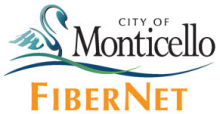Burlington's Next Step: Become a Gigabit Community
Burlington has seen ups and downs over the past few years but a new chapter is about to begin. The non-profit U.S. Ignite and the City are partnering to create BTV Ignite. The initiative will develop a gigabit community infrastructure and the applications that use it. With help from U.S. Ignite, Burlington will join the growing list of gigabit communities.
An advisory committee is fueling interest in the project. Mayor Miro Weinberger describes the effort as a way to develop a tech friendly local economy and increase access for individuals and institutions. A recent Government Technology article quoted the Mayor:
“We believe we’re well on our way to being the first city in the country that provides gigabit access to every student from kindergarten through college and even graduate school here in Burlington,” Weinberger said.
The City and its partner have developed five critical steps based on consultation with Kansas City, Chattanooga, and other gigabit communities:
1. Develop Structure to Foster Applications-Driven Energy
Much like the KC Digital Drive in Kansas City, [Executive Director of U.S. Ignite Bill] Wallace said the mayor’s advisory committee must play a key role in helping drive development.
2. Create the Most Robust Infrastructure
Wallace said this will be particularly necessary for schools, businesses and libraries.
3. Embrace Technology Through Community Events and Hackathons
By setting up a continuous stream of events like community hackathons, digital sandboxes and a hacker homes network similar to one developed in Kansas City, the city will be able to focus more on app development for specific capabilities, like cybersecurity or the development of complex systems.
4. Share Practices With Other Cities to Deploy Networks
This could also mean sharing practices on how to generate applications.
5. Tap into Federal Resources
Wallace said looking to federally funded resources like the National Science Foundation will be important when building out the infrastructure and developing applications.



